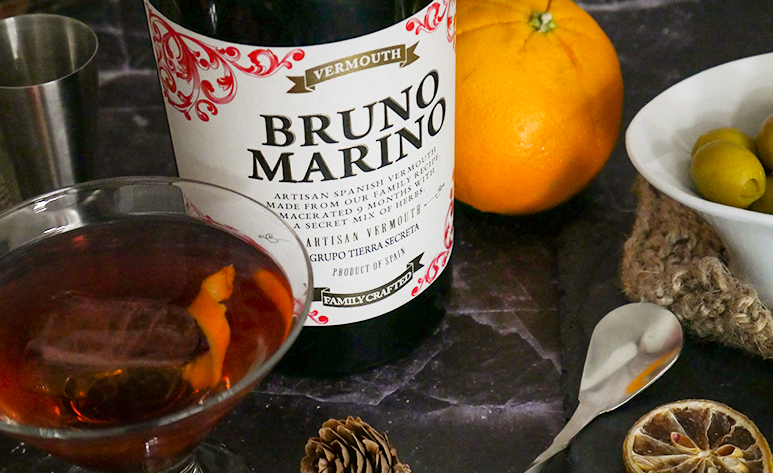When you’re at the grocery store deciding on which bunch of grapes is going to look best alongside the jamón serrano and Manchego cheese on your charcuterie board tonight, you’ve got two options: the violet-purple ones we call red grapes and the greenish-yellow variety we call white. While the Concord grapes we consume for snacking are a far distant cousin of the Vitis vinifera grapes used in viticulture, winemakers are still faced with a similar choice as they decide which kind of grapes to plant in their vineyards and ultimately bottle.
In making this decision, winemakers must carefully consider the characteristics of each different grape and figure out which varieties will suit their needs best. White grapes, especially those like Sauvignon Blanc and Riesling which thrive in cooler climates, typically have a higher proportion of malic acid at harvest, giving them a snappy, vibrant acidity. Malic acid is responsible for that mouth-puckering tartness you feel when biting into a green apple. The fruit character of wine from white grapes will typically land in the citrus, tree fruit or stone fruit families.
On the other hand, red grapes like Cabernet Sauvignon and Syrah, which tolerate warmer climates better, typically have higher proportions of tartaric acid at harvest, which has a less bracing, but still pervasive acidity. Both types of acids are present in all wine grapes, but malic acid breaks down more rapidly as temperature increases, giving tartaric acid the edge here. The fruit character of these wines will typically fall in more of the red and black fruit categories (think strawberry, blackberry, plum, etc.).
It’s important to note, however, that these acid and flavor profiles exist independent of the color-generating part of these grapes, their skins. With a few exceptions, the pulp that makes up the largest part of the grape is translucent and virtually colorless in both red and white grapes. It’s only through skin contact during fermentation that color is added naturally. In white wines, juices are pressed and removed from their skins before being fermented separately. In red wines, however, the skins are left with the pressed juices and fermented together, giving them an opportunity to imbue the resulting wine with their purple-hued anthocynanins that add color and astringent tannins which add structure.
Would it be possible then, to ferment a red grape as you would typically a white one, by pressing the juice and fermenting it separately, yielding a wine with the acid and flavor profiles typically associated with a red wine but without the color and tannin?
Enter “blanc de noir” winemaking. “Blanc de noir,” literally “white from black,” is a style of winemaking that does just this, and the resulting wines can be both surprising and spectacular. Popularized first in Champagne, where Pinot Noir and Pinot Meunier (both red grapes) are made into sparkling white wine, bold and experimental winemakers are exploring this style of production throughout the world. In the best examples, these wines resonate with a novel harmony of red fruits and delightful acidity absent the astringency and fuller body typically associated with red wines.

For a great introduction to this style, check out Vaivén from biodynamic producer Dominio de Punctum of central Spain. This 100% Tempranillo is harvested at night for optimal ripeness and its juices are quickly separated from their skins after they’re pressed. The wine has a bright, yellow color with a pearly iridescence that tells you you’re about to taste something special. On the nose, fresh strawberry notes dominate and carry through to the palate with refreshing acidity.
Winemaker Ruth Fernandez conceived of Vaivén Blanc de Noir “to give wine lovers a chance to enjoy a unique wine full of nuance and expressive terroir.” What started out as a whim to make use of a spare tank has turned into one of Dominio de Punctum’s most popular wines.
Vaivén, along with many other blanc de noir wines, is a great pairing solution for dishes that would be traditionally served with a white wine, but whose flavors pitch at a lower frequency with deeper notes and less acidity. Warming spices like cinnamon and allspice, when used in savory dishes, can sometimes be a challenge to pair, but blanc de noirs are ideal mates for them. You could stay in Spain and try it with a Granada-inspired sauteed spinach and mashed chickpea cazuela or venture even further for a Moroccan chicken tajine with apricot if you’re feeling adventurous.
Wherever you land, take an opportunity to expand your palate and pick up a bottle of Vaivén today!
Vaivén is available at following locations:
- Maple End Package Store, Bristol (CT)
- Wine & Spirits at Roxbury Station, Roxbury (CT)
- Cost Less Wines & Liquors, Stamford (CT)
- County Wine & Spirits, New Preston (CT)
- Fairgrounds Wine and Spirits, Newtown (CT)
- Harbor Wine and Spirits, Guilford (CT)
- Lakeside Wine & Liquor, Stevenson (CT)
- Ninety 9 Bottles, Trumbull (CT)
- Sixty Vines Locations in FL, TX, and TN
- Available by the glass at the Surfcomber Hotel in South Beach Miami





